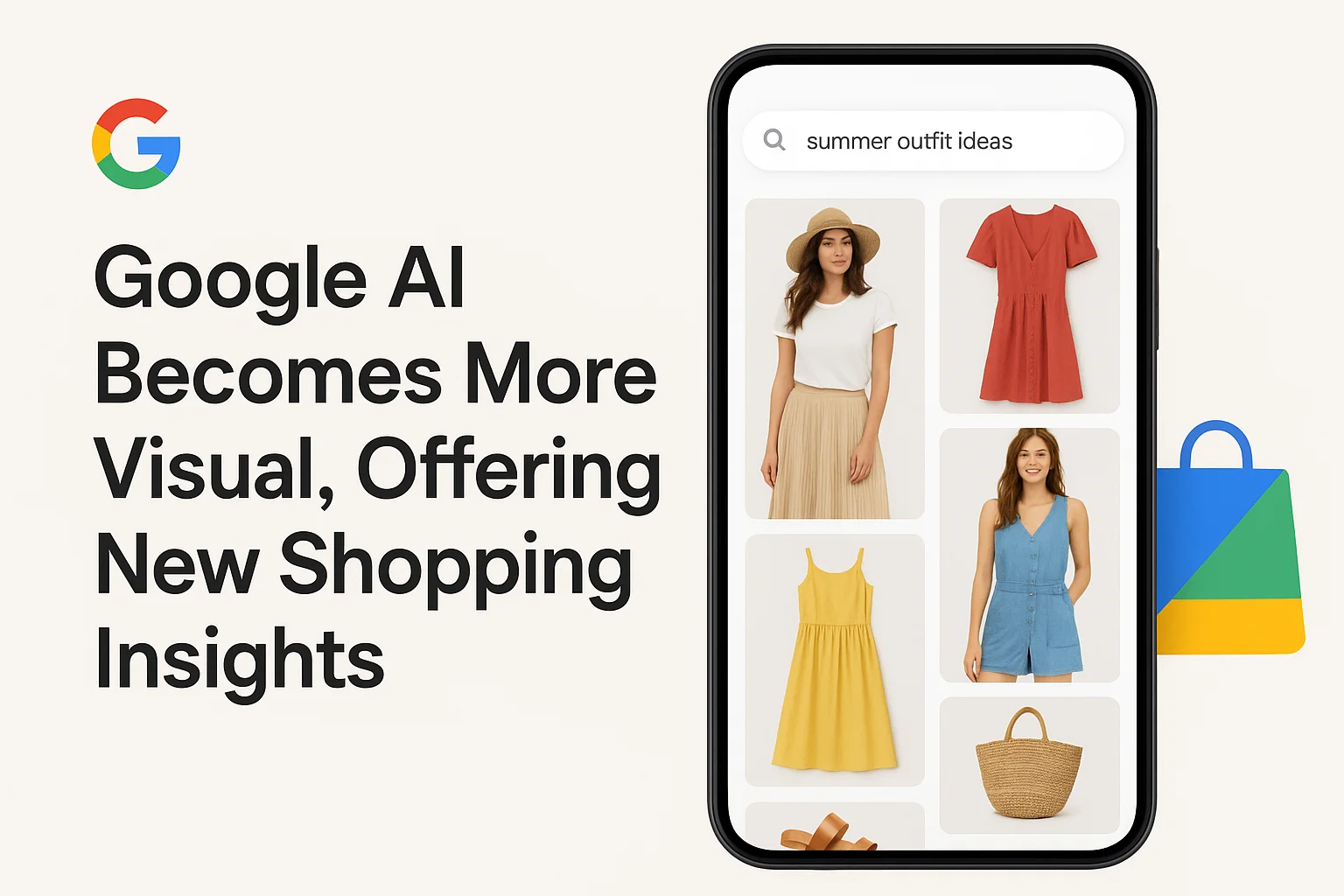In the evolving world of digital search, Google AI shopping is transforming the way people explore and discover products online. With its latest update, Google has introduced more visual AI updates that go beyond simple text-based responses. Now, search results are not just about providing links but about inspiring users with imagery, interactive layouts, and AI-powered shopping insights that make the buying journey far more engaging.
This evolution in Google’s technology is a reflection of how consumer behavior has shifted. People no longer just search for “best shoes” or “modern kitchen sets.” They want to see designs, compare styles visually, and get tailored recommendations. The latest Google Search AI features are designed to meet this very need, combining advanced algorithms with visuals to create a more personalized shopping experience.
One of the most exciting aspects of this update is how it enhances visual shopping inspiration. Instead of scrolling through endless product lists, users can now see curated visual suggestions that reflect their style, preferences, and even shopping history. For example, if someone searches for “summer outfit ideas,” Google AI doesn’t just display brands or links—it provides AI-driven product discovery that feels like a digital stylist, putting together looks and suggesting complementary items.
What makes this shift so significant is the way Google generative AI shopping is narrowing the gap between browsing and buying. Traditionally, people spend hours moving between search engines, brand websites, and online marketplaces. With Google’s new approach, the platform itself becomes a shopping companion. Whether it’s recommending a lamp that matches the color tone of a searched sofa or suggesting eco-friendly alternatives, the AI is built to provide context-rich answers rather than generic search results.
The new personalized shopping with AI features also highlight Google’s focus on individual preferences. By analyzing user intent, recent searches, and shopping patterns, the platform can deliver insights that feel tailored. Imagine searching for “work-from-home desk setup” and instantly receiving a visual spread of ergonomic chairs, compact desks, and lighting solutions—all curated to align with your style. This personalized layer not only saves time but also creates an element of delight for the user.
Beyond convenience, these updates represent a broader shift in the Google AI search experience. Search is no longer about finding information; it’s about exploring inspiration. With immersive images, interactive displays, and dynamic layouts, users spend more time engaging with content, which in turn influences how businesses and brands position themselves online. Companies now have an opportunity to stand out in AI shopping recommendations by ensuring their products are optimized for these new formats.
The future of AI in online shopping looks promising because it redefines how consumers interact with brands. Instead of passively searching, customers actively participate in discovery. Visual suggestions lead them toward new styles, products, and categories they may not have considered before. For businesses, this opens doors to higher engagement, stronger brand connections, and ultimately, increased sales.
But the update is not just about e-commerce. It’s also about making everyday queries more visual and user-friendly. Searching for “best living room ideas” could result in AI-curated boards that blend products from multiple retailers. Looking up “healthy dinner recipes” might show you ingredient visuals, preparation steps, and even shopping links for the items you don’t have. This integration makes search results more actionable and encourages users to interact directly within the ecosystem.
The implications for marketers are equally powerful. To thrive in this new environment, businesses need to focus on optimizing content for visual discovery. It’s not enough to rank in text-based searches anymore; brands must adapt their imagery, product data, and structured information to appeal to Google AI visual updates. Companies that embrace this shift early will be at the forefront of digital visibility, while those slow to adapt may struggle to keep pace.
At the heart of this transformation is user experience. People crave simplicity, inspiration, and relevance, and Google is responding by making shopping journeys more intuitive. Instead of feeling overwhelmed by options, users are guided toward what resonates with them most. This is where the blend of AI-powered shopping insights and visual presentation delivers unmatched value.
As AI continues to grow, it’s clear that the line between search, discovery, and purchase will become increasingly seamless. Google AI shopping is setting the stage for a world where finding what you want is less about searching and more about experiencing. Whether you’re looking for a new wardrobe, planning a home redesign, or simply searching for inspiration, the platform promises a smarter, more visual way to shop.
In the end, the latest update demonstrates Google’s ability to not just keep up with changing consumer expectations but to anticipate them. With its focus on visual discovery and personalized recommendations, the company is shaping the future of online retail. For users, it means effortless inspiration at their fingertips. For businesses, it means new opportunities to connect with customers in meaningful, visually compelling ways.





